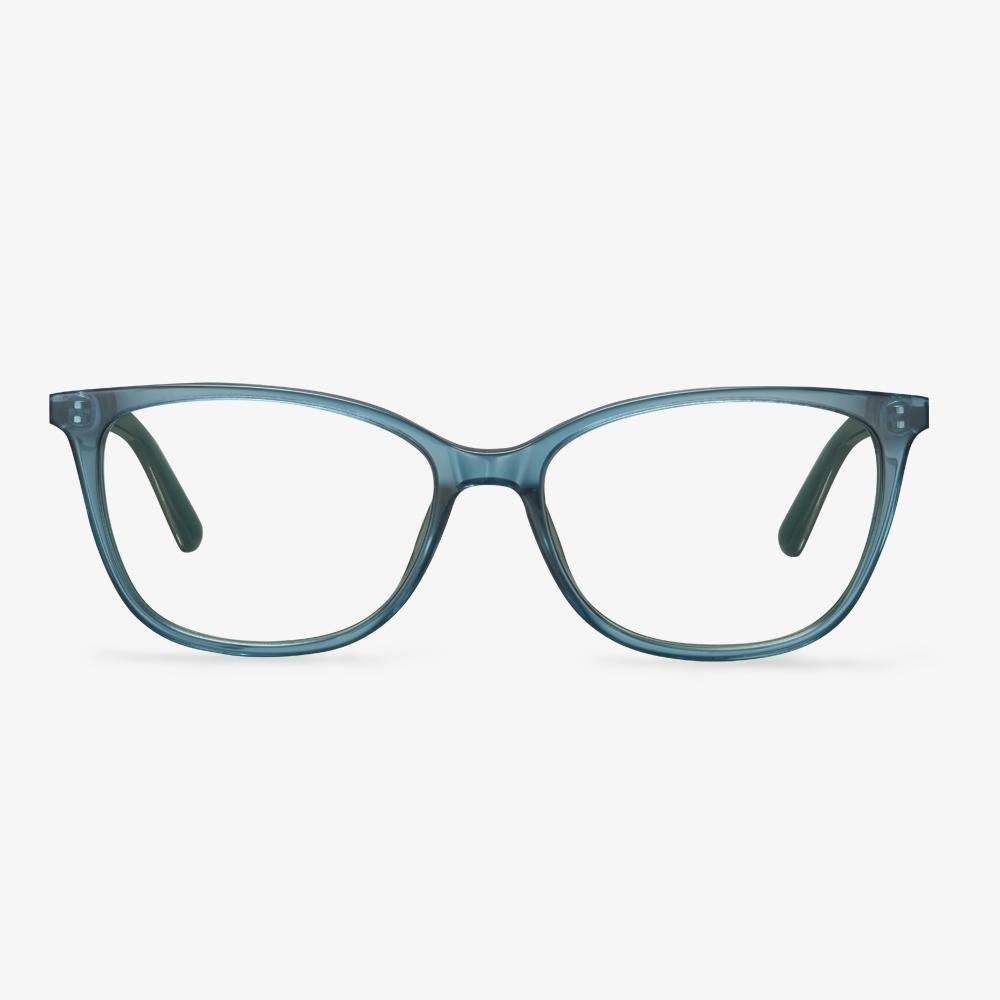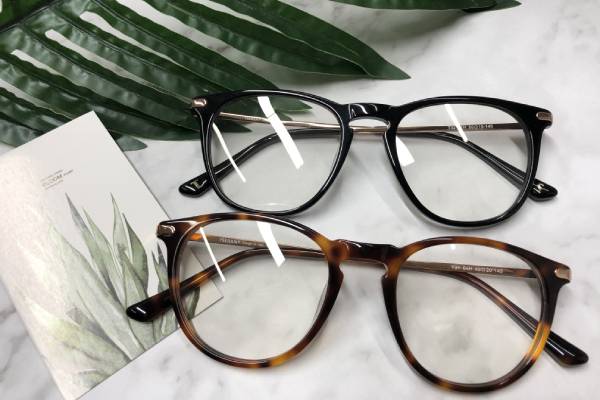What Glasses Are Made Of?
In general, most glasses are made of plastic lenses. Why are glasses lenses made of plastic? In fact, plastic glasses are lighter than traditional glasses lenses used in eyeglasses, which means they are more comfortable to wear. At the same time, it is easy to apply lens coatings like anti-reflective to plastic lenses.
Besides, children’s glasses are also made of plastic because it is more resistant to impact. There are four main types of plastics used to make eyeglasses and sunglasses lenses which are plastic, Trivex, polycarbonate and high-index plastics.
The plastic lenses made from CR-39 were first introduced. CR-39 is an abbreviation for Columbia Resin #39, the 39th plastic of that type made by Columbia Resin.
Then the polycarbonate glasses were invented. Polycarbonate became out of this world once it found use in aeronautics. Polycarbonate is a type of plastic that can be produced as transparent and easily shaped, making it great for glasses lenses. Polycarbonate is impact resistant so that they are a good lens choice for kids. And the polycarbonate lenses have 100% UV protection.
Next, high-index lenses are available. High-index lenses have a high refractive index with a thin lens. Although high-index lenses are thinner, they are heavier due to the higher density of these plastics.
So, what glasses are made of? Most glasses are made of plastics. Then how are glasses made? To get the answer, keep on your reading.
How to Choose Reading Glasses?
If you need reading glasses when using a computer, you may want to choose a lower reading glasses power. This is because most people view their screen from a greater distance from their eyes than when they are reading a book or a magazine.
However, if you need reading glasses for looking at something very close or very small, you may need a pair of stronger power glasses.
In most cases, when two reading glasses’ powers seem equally suitable, choose the glasses with the lower power. Picking reading glasses that are too string typically will cause more discomfort problems than reading glasses that are a little too weak.
You need to buy real titanium frames.
In general, titanium frames range from hundreds of yuan to thousands of yuan. Many store counters display frames called pure titanium, but if you look closely at the labels, there is no indication of the titanium content or composition. When you buy titanium frames, check if they are titanium or pure titanium. In reality, pure titanium glasses frame refers to the composition of titanium more than 99%, so you can use the weight to see if it is pure titanium. If the frame is heavy, it is definitely not pure titanium.
Contact Lens Material - PHEMA material
It is the earliest material used in the production of contact lens hydrophilic material. The main advantage is water absorption, with a water content of about 38%. The material is soft, but its disadvantage is only partial oxygen permeability.
Foster Grant
Foster Grant's Modera series wouldn't be complete without our Larsa reading glasses. A creamy caramel rectangular frame wrapped in delicate animal motifs in gold and brown looks chic. The spring-hinged temple is comfortable and suitable for all-day wear. Each comes with a protective case that you can use on your travels.
Sometimes they need to be adjusted by professionals.
Some connecting parts of glasses will be loose, but some people do not care about them and make casual changes. In reality, the change of the lens frame is very technical. The distance between the lens and the glasses will affect the effective strength of the lens, so the adjusted glasses need to be 12 to 14 mm away from the eye. The optical center of the lens should be aligned with the pupil position, and the nose pad, the temples should be consistent with the contact part of the bridge of the nose and the ear, without pressure and pain. Therefore, the lens frame must be adjusted by a professional optician. Especially some special lenses (progressive multi-focus glasses) need to be repaired regularly.
The glasses slid up your nose.
Although glasses often slide up your nose and pushing them up can be annoying, it's easy to pull them tight. If your nose frame is metal, use your thumb to shrink the nose pad until the frame no longer slides. If you have plastic frames, soak the arm in warm water for 30-60 seconds, then apply slight downward pressure to the end of the arm. This will make it fit more behind the ears, which will tighten the overall fit and prevent slippage. If tightening the frame doesn't work, try using eyeglass wax to stop it from slipping.











































